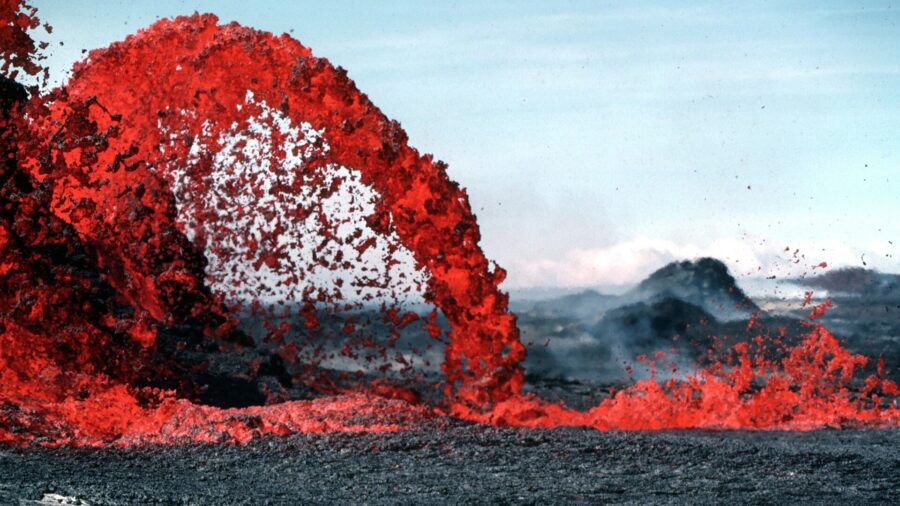Magma Chamber Discovered In Active Volcano Poses Serious Threat
An active volcano called Kolumbo has a large magma chamber that could erupt in the next 150 years.

A giant magma chamber in an active volcano in Greece might be reaching a point that could cause this submarine volcano to erupt, which would pose a “serious threat.” A new study posted in the American Geophysical Union’s Geochemistry, Geophysics, and Geosystems has revealed this chamber under the Kolumbo volcano could reach a critical level. Kolumbo erupted last in 1650 C.E., but this undiscovered magma chamber has been growing at roughly 4 million cubic meters per year since then.
The last time this active volcano erupted, it reached sea level and killed 70 people in its wake. Scientists have now determined the melt within the chamber has reached 1.4 cubic kilometers, which was published in the new study. Though they believe eruption might not happen for another 150 years, it could cause serious damage once it happens.
The scientists who published the study have now brought this to the attention of facilities in the area close to Kolumbo and have asked for more information and monitoring of the active volcano. Scientists have stated that should Kolumbo erupt, it might have the same seismic power as Hunga Tonga, which erupted in January of 2022. That volcano’s eruption caused tsunami waves that reached a staggering 66 feet high.

The scientists have determined that the active volcano of Kolumbo erupting would also be larger considering that it sits 1,600 feet under sea level. These types of underwater volcanoes have the ability to cause massive tsunami waves and ashfall that could be quite damaging. Scientists will now use full-waveform inversion to determine what is going on in this magma chamber.
Michele Paulatto, a volcanologist at Imperial College London, U.K., stated, “Full-waveform inversion is similar to a medical ultrasound, as it uses sound waves to construct an image of the underground structure of a volcano.” Hopefully, this new data can be used to determine what dangers lie ahead should this active volcano erupt anytime soon.
One of the growing concerns for this new study and the active volcano that it covers has everything to do with the area. Kolumbo is in the same area as Santorini, which is a known tourist destination. Should the volcano erupt, it would spell trouble for anyone that would happen to be vacationing there.
What makes this study a bit more frightening is that the scientists have only determined that Kolumbo could erupt in the next 150 years, though they are not entirely sure when it would occur. That’s not to say that this active volcano would erupt in the next 10 years, but this full-waveform inversion technology is going to be used to help determine the actual number. At least, that is the hope.
The technology that will be used to monitor this active volcano will determine if and when it is set to erupt. Kajetan Chrapkiewicz, the lead author of the study, stated that the eruption could be measured at least a few days before it happens. This would allow the full evacuation of the area before it is covered in liquid hot magma.
The idea of a catastrophe like what happened with Hunga Tonga sending massive tsunami waves sounds as frightening as it could be. Hopefully, this new study can help determine more about when this active volcano is set to erupt, so everyone planning a vacation there will move it to another location.












